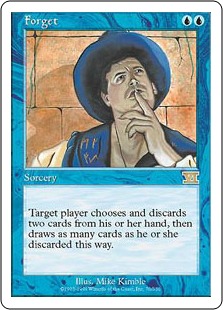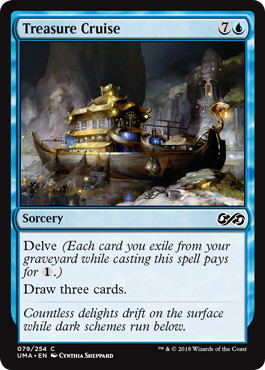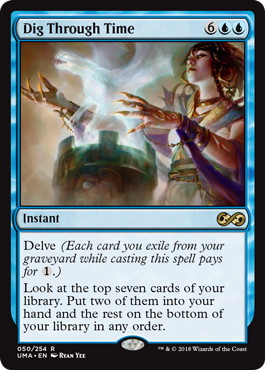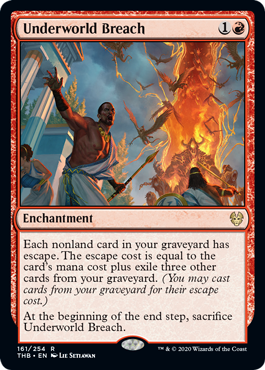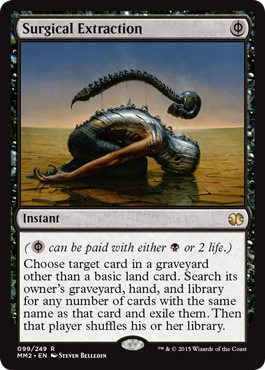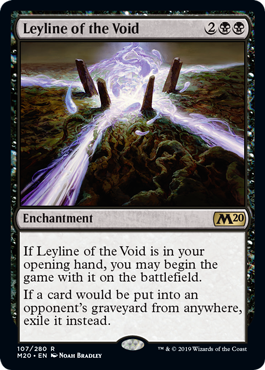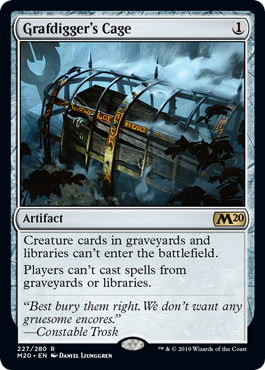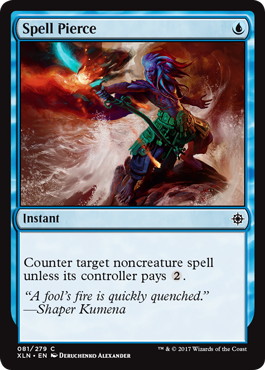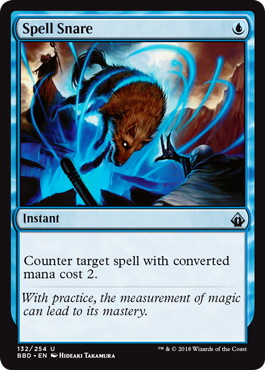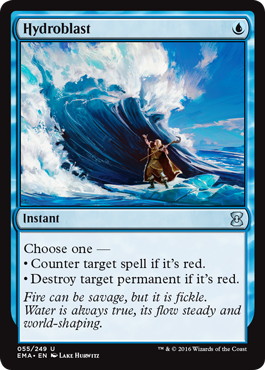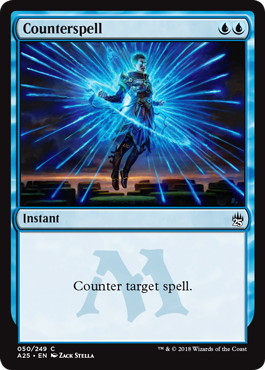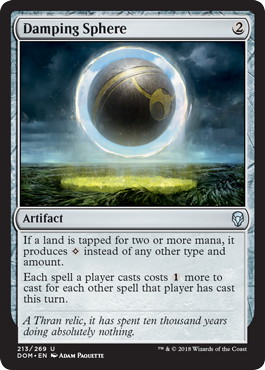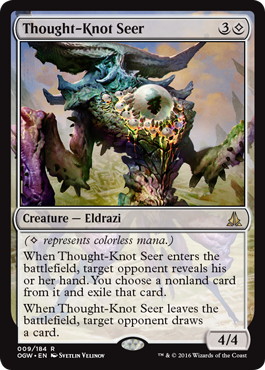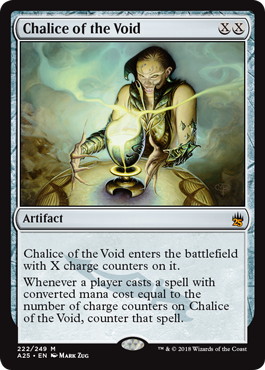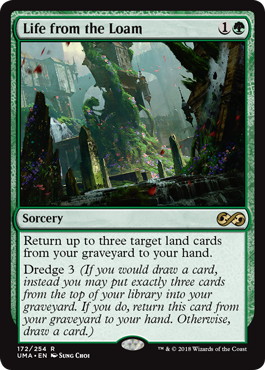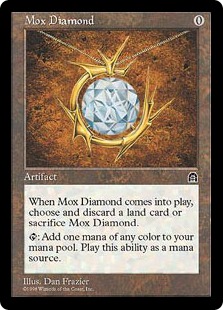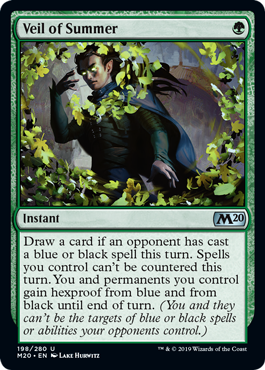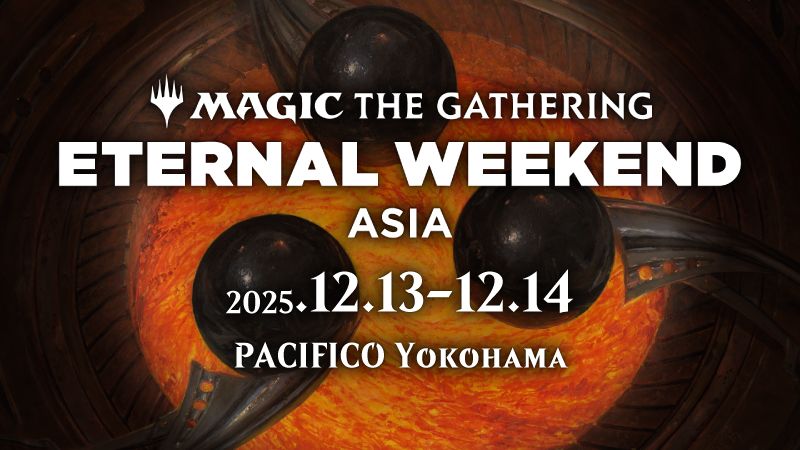Introduction
Hello everyone! Due to the recent cut of Legacy main events at Magic Fests, I wanted to take the opportunity to write a nostalgic article about my fondest Legacy Grand Prix memories. Even without a platform at the highest open paper competition, I am sure the Legacy format will live on, powered by dedicated local communities all over the world and digital premier play on Magic Online. Therefore, after my trip down memory lane, I will look towards the future and add some observations about recent and current Legacy metagame developments. Enjoy!
Legacy Grand Prix Memories
Before even knowing that large Magic tournaments like Grand Prix existed, I had discovered the Legacy format via StarCityGames.com Open streams in late 2010 and was fascinated by the power level of cards and diversity of strategies, most of them being far away from what I was used to from the casual kitchen-table Magic, which I was exclusively playing back then. Following the gameplay was difficult at first, but my enthusiasm led to deeper immersion in the format through strategy articles and videos. Watching Sunday Legacy SCG streams quickly became an enjoyable routine as well as a welcome diversion from a personally difficult final year of high school in Belgium.
After graduating and moving back to Berlin, I was motivated enough to take the plunge of buying a Legacy deck and started attending local tournaments. Even though small of scale, the competition was so enticing that I started travelling to farther events in other German cities and after finding out there would be a huge Legacy tournament called “Grand Prix” in Amsterdam, I immediately planned my trip. Preparing for the GP back then was mostly theory-crafting and meeting local friends for a few rather casual games, in addition to bi-monthly local 5-round tournaments. Although winning mattered to me, I was mostly just excited to travel abroad for a Magic tournament, and eager to use it as a learning experience. A few satisfying results of 4-1s and 3-2s at locals convinced me to stick with Sneak & Show, which was not quite the same powerhouse it became a half-year later with the release of 《Griselbrand》, but already a strong strategy that I enjoyed playing, and quite forgiving of a lack of experience and technical gameplay prowess.
Unfortunately, I packed every part of my growing Legacy card-pool for the trip to Amsterdam EXCEPT the box containing my 75 for the Grand Prix! Nowadays, borrowing missing cards or even a full deck from friends or the tight-knit Legacy community at large wouldn’t be a problem, but back then, I was travelling alone and wasn’t even really aware of the concept to borrow cards. The deck I eventually came up with, using my remaining card-pool, was an UB Reanimator list without 《Force of Will》 or 《Show and Tell》, which had been left at home with the rest of Sneak & Show. Luckily, the frustration and anxiety about leaving my deck at home were quickly supplanted by the great enjoyment of the Grand Prix experience. A 3-6 personal record in the 1878-player main event was nothing to write home about, but felt good enough for a first attempt. On Sunday, I was following along every round of day 2, culminating in the finals, which gathered a large crowd of enthusiastic spectators. Despite a lack of personal success, the whole experience of fierce large-scale competition had impressed me greatly and I was motivated to repeat it.
In addition to eagerly following the results and, wherever applicable, livestreams of North American Legacy GPs, more GP trips through Europe followed with Ghent in 2012 and Strasbourg in 2013. Getting closer but continuing to not make day 2 didn’t deter me from enjoying them immensely, especially since Sunday’s schedule still had a huge 9-round side event back then. Watching the finals of GP Strasbourg’s Sunday side event together with some of my closest friends from Berlin, where fellow Berliner Legacy master Carsten Kötter on ANT played against Hareruya CEO Tomoharu Saito on RUG Delver, after the main event had long concluded and they had already started emptying the tournament hall, remains one of my favorite Magic memories.
Around mid-2014, I was becoming more competitive-minded and focused on winning. Therefore, I bought into Magic Online in order to improve my gameplay, as well as to have more opportunities to play Legacy, since our local scene was waning at this point. I was hooked immediately and spent the following months grinding Daily Events and 8-player queues (MTGO Leagues didn’t exist back then) from a 《Force of Will》 – less budget UR Delver list to my trusty Sneak & Show. Later during the same year, I made my first Magic trip overseas, for Legacy Grand Prix New Jersey. With 4003 players, this remains the largest Legacy tournament to this day!
Due to self-esteem issues and an anxiety-induced difficulty to talk to strangers, the lone journey to the US was far from my comfort zone. Still, powered by motivation to play in my first non-European Grand Prix, I met the challenge despite some struggles. The Grand Prix itself was quite a rollercoaster. Despite several tries, I failed to win a last-chance-trial on Friday to secure byes for the main event. This was the Khans of Tarkir Delve spell era, with 《Treasure Cruise》 and 《Dig Through Time》 still legal in the format. Nonetheless, a Grand Prix metagame would always be diverse, so I felt reasonably confident with Sneak & Show to have a chance to make it past the early rounds, where one can expect more off-beat and budget strategies such as Burn. A round 5 loss to Manaless Dredge, however, put me on the back foot at a 3-2 record in the main event.
Proceeding to win the following four rounds of day 1 and clinching my first Grand Prix day 2 already felt like a great accomplishment, but it didn’t stop there. I ran the tables in some exciting matches on Sunday, and finished the tournament in 13th place with a 13-2 record! Alongside the individual accomplishment and going above and beyond the goal of making it to day 2 of a GP for the first time, qualifying for a Pro Tour by playing Legacy felt great, as well. Needless to say, the long-awaited personal success made an already amazing Legacy Grand Prix experience even sweeter.

(Image Copyright: MAGIC: THE GATHERING)
By virtue of making it onto the Pro Tour, I branched out into other formats for the first time, where Magic Online was a very helpful tool for general testing and improving technical play, once again. Still, even after qualifying for more Pro Tours in the following years and playing the 2015 Magic Online Championship in Seattle, the Legacy Grand Prix remained my favorite kind of Magic tournament. Whenever I couldn’t participate myself, following the text and video coverage was something I looked forward to as soon as the Grand Prix formats for each year’s schedule were announced. The outlook of an upcoming Legacy Grand Prix kept my motivation high, helped to avoid burnout from the daily MTGO grind and made it easier to push through rough personal life patches. Motivating me significantly more sustainably than personal success, it brought me great joy to follow along and root for expert Legacy players at every GP, followed by analyzing the top lists and official or community-compiled day 2 metagame breakdown.
A prime example of a Legacy Grand Prix that I didn’t play in, but still draw energy from until today, is GP Chiba 2016. With 2503 players, it is the second largest Legacy tournament ever, behind the aforementioned GP New Jersey 2014. It actually sold out almost instantly after registration waves one and two opened, showcasing the immense Legacy enthusiasm in Japan. Organized by Hareruya, Tomoharu Saito even provided free entry into the tournament for 500 students (for more information on Hareruya’s community initiatives at GP Chiba, this article provides a good overview: “Building the Japanese Community with Hareruya”).
I was watching live coverage all weekend, both on the official Japanese NicoNico stream and as a rebroadcast commentated in English by Legacy enthusiasts Bob Huang, Anuraag Das, Jarvis Yu and James Pogue. When I saw pro player Kentaro Yamamoto featured at 8-0 in round 9, I was very excited to see him on my favorite deck. It wasn’t much of a surprise, since I knew he had tested Sneak & Show for the past months on MTGO – I even faced him in a Legacy League once – and that he had won The Last Sun 2013 with it, too.
Still, it was very uplifting to see him do so well, despite receiving a close loss in his round 9 feature match, and I was rooting for Kentaro to do well on day 2. And that he did, only dropping a single game in an unintentional draw against Miracles, and clinching a Top 8 spot at 13-1-1 with a paired-up round 15 feature match win against one of Sneak & Show’s toughest matchups in Death & Taxes. Kentaro proceeded to win every single game of his Top 8 elimination matches, and secured the first ever Grand Prix trophy for Sneak & Show! I still re-watch his feature matches nowadays, whenever I am close to burning out from playing too much Sneak & Show or when I feel a general fresh surge of motivation is necessary. His poise and composure, as well as his technical play, are truly inspirational.
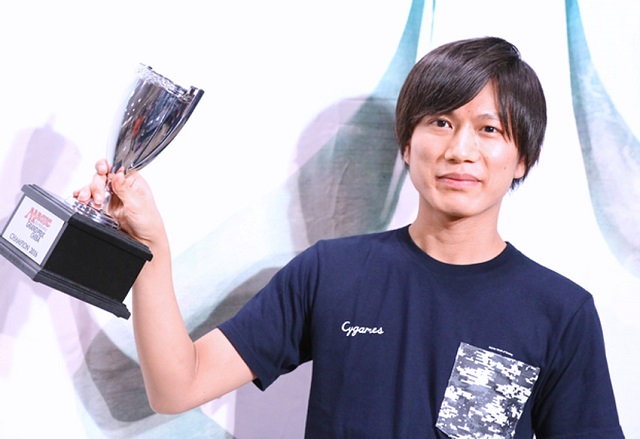
GP Chiba 2016 Winner: Kentaro Yamamoto
(Image Copyright: MAGIC: THE GATHERING)
Since I had heard some of my German friends, who had attended GP Chiba, rave about the amazing Japanese Legacy community, as well as the country of Japan itself, I was determined to make it to the next Japanese Legacy Grand Prix. Unfortunately, there weren’t any scheduled in 2017, but I got my chance with GP Shizuoka in late 2018. The trip was amazing, even though the tournament itself was an unfortunate close miss of 5-3 on day 1, after a 5-0 start.
Nevertheless, several friendly players approaching me and asking if I was JPA93, one of them even asking to take a photo, made the personal failure much more bearable. I definitely want to come back to Japan at some point, since it was probably my favorite travelling experience so far. The Japanese Legacy scene is still thriving, so I might even connect my trip with attending one of the larger tournaments, such as Hareruya’s God of Legacy series.
After GP Shizuoka, three more Legacy Grand Prix followed in 2019: Niagara Falls, Atlanta and Bologna. I was fortunate to attend all of them and despite mediocre results (11-4 in Niagara Falls, 4-3 and 8-6 drop in Atlanta and Bologna, which you can read about in my previous articles below), I had a great time.
- 2019/10/01
- GP Atlanta Testing Diary
- Jonathan Anghelescu
- 2019/12/10
- Sneak & Show at GP Bologna
- Jonathan Anghelescu
Legacy in 2020
《Yawgmoth’s Will》 2.0 has Arrived
While, as of now, we don’t have any more Legacy GPs to look forward to, the format is still in an interesting and engaging place. Most format experts predicted Theros Beyond Death wouldn’t have the same impact as previous sets of 2019 had, but were quickly proven wrong with “《Yawgmoth’s Will》 2.0” 《Underworld Breach》 spawning an entirely new tier 1 combo archetype. The optimal build has not been settled on yet, but various configurations from Jeskai with 《Force of Will》, 《Teferi, Time Raveler》 and 《Silence》-effects, over Grixis with discard and 《Infernal Tutor》, to 《Emry, Lurker of the Loch》 / 《Mox Opal》 Stompy builds like this one, and even hybrid lists of Delver and Breach have had their share of success in premier paper and online events.
How to Fight the new Bogeyman
Even though so many different variations of Breach combo exist and therefore their way of dealing with opposing hate varies as well, efficient ways to combat the new bogeyman of the format apply to almost all configurations (apart from Peter van der Ham’s Delver / Breach hybrid, which can switch between combo and aggro/tempo roles and is therefore even more difficult to hate out).
The most obvious form of hate is removing their option to access the graveyard. 《Surgical Extraction》 is probably the weakest option and has fallen out of favor, since it is mostly only effective if you manage to counter or discard a crucial combo-piece and target it with 《Surgical Extraction》. During the actual combo of 《Underworld Breach》 + 《Lion’s Eye Diamond》 (LED) + 《Brain Freeze》 you most often won’t have a window for disruption with 《Surgical Extraction》, with 《Brain Freeze》 being an instant, and considering they also often start their combo turn with 《Silence》 effects or gain access to flashbackable counter magic. Therefore, permanent-based graveyard-hate such as 《Leyline of the Void》 or 《Grafdigger’s Cage》 is much more effective and forces them to find removal (which they do, however, have plenty of, as well as many cantrips to find it).
Ideally, you would support your graveyard-hate with additional disruption and/or a fast combo kill of your own. This means, if you are playing more of a fair game like Delver or Control, you need more diversified interaction. Counter magic can always provide that, although they are well-equipped to fight back with their own counters or 《Silence》-effects / 《Veil of Summer》. Overloading on cheap counters is still a viable additional avenue of disruption for fair decks, with 《Spell Pierce》, 《Spell Snare》, 《Hydroblast》 or even 《Counterspell》 all capable of countering an 《Underworld Breach》 quite efficiently.
While your own 《Veil of Summer》 will protect your counters from your Breach opponent’s counters, they won’t stop the actual combo alone, since they can 《Brain Freeze》 themselves and kill you with 《Thassa’s Oracle》 or 《Lightning Bolt》 / 《Grapeshot》. Therefore, 《Veil of Summer》, while format-defining earlier on, has been on a bit of a downturn in popularity in recent weeks, letting some Breach and Storm decks adopt a discard-heavy disruption-suite of 《Thoughtseize》 and 《Duress》 once again.
Speaking of which, discard can be another effective form of hate against Breach, since very few builds still play 《Veil of Summer》. Especially Grixis Delver, with the ability to chain 《Thoughtseize》s with 《Dreadhorde Arcanist》, might replace UR Delver as the most popular Delver build. Still, even UR Delver has various angles of attack against Breach combo, with counters, graveyard hate, and permanent-hate such as 《Null Rod》 or 《Damping Sphere》.
White fair decks like Miracles also gain access to hate-bears like 《Meddling Mage》, 《Lavinia, Azorius Renegade》, or the efficient hate-permanent 《Deafening Silence》 from Throne of Eldraine. Furthermore, white and green (/black) provide removal for 《Underworld Breach》, with 《Disenchant》 / 《Return to Nature》, and, even more effective since it is uncounterable, 《Abrupt Decay》. These 2-mana enchantment removal spells are useful additional disruption, although they are cleanly rendered useless by 《Silence》-effects, or in 《Abrupt Decay》’s case, 《Veil of Summer》.
Stompy decks also have a variety of impactful plays against Breach combo, especially Eldrazi Aggro with early 《Thought-Knot Seer》 disruption and aggression, as well as hateful artifacts like 《Chalice of the Void》, 《Trinisphere》, and even pseudo-main-deck graveyard-hate, by tutoring it with 《Karn, the Great Creator》.
As you can see, Breach combo can be attacked from various angles. Nevertheless, you shouldn’t make the mistake to assume they won’t be able to fight through many combinations of hate. Their combo is very compact and cheap and they often only need to resolve one 《Underworld Breach》 with a filled graveyard to win the game. It remains to be seen whether the available interactive answers for fair decks and other combo decks such as Reanimator or Sneak & Show are good enough to create a healthy co-existence alongside Breach combo in the Legacy metagame.
Another Important Addition from Theros Beyond Death
The other Theros Beyond Death card with considerable impact on Legacy has been 《Uro, Titan of Nature’s Wrath》. While Uro hasn’t really spawned completely new deck-to-beat level archetypes like 《Underworld Breach》 yet, he already found his way into the main deck of existing power-houses such as 4C Snow, Stryfo Pile, or, probably most prominently by winning the Legacy Challenge on February 16th, BUG Zenith. While Uro is a low-impact card against combo decks, he acts as an excellent haymaker against any fair deck. Practically immune to counters and still trading off favorably against 《Swords to Plowshares》, Uro also goes above other fair trump-cards such as 《True-Name Nemesis》.
Apart from being a useful 1-of for value-oriented decks, especially with 《Green Sun’s Zenith》, I also expect more Uro-focused shells with 《Life from the Loam》 and 《Mox Diamond》, like I have seen Callum Smith (WhiteFaces on MTGO) tinker with, to catch on soon. When adding 《Mox Diamond》 – powered 《Chalice of the Void》s to hateful permanents like 《Collector Ouphe》, a playset of 《Abrupt Decay》s and a counter-suite of 4 《Force of Will》 + 1-2 《Force of Negation》, these BUG Zenith value piles do seem rather well-equipped to fight Breach combo, as well.
Adapting Sneak & Show to the Underworld
As for Sneak & Show’s position in the new metagame, I am warming up to it again. There was a period where I played mostly UR Delver to combat Breach combo and Delver mirrors, but the emergence of more value-oriented Uro-powered BUG piles has put me off Delver and back on Sneak & Show for now. Those value piles have many dead main-deck cards such as 《Abrupt Decay》 and even one or two Force of Will / Negation effects are often not enough to stop our combo. Moreover, many of their sideboard slots are filled with Breach-hate like 《Leyline of the Void》 or 《Damping Sphere》, which are mostly irrelevant against 《Show and Tell》 strategies.
I also quite like the matchup against Breach, with a fast combo of our own and access to counter-magic and graveyard hate. A traditional UR list with 4 《Spell Pierce》 might be a good call, although I have also had good initial success with a more unorthodox RUG build containing 4 《Veil of Summer》 main and an experimental sideboard with 4 《Dreadhorde Arcanist》s.
- Jonathan Anghelescu
- – Sneak and Show with Veil of Summer
- Test Deck #1
3 《Volcanic Island》
1 《Taiga》
1 《Tropical Island》
4 《Scalding Tarn》
3 《Misty Rainforest》
3 《Ancient Tomb》
2 《City of Traitors》
-Land (19)- 4 《Griselbrand》
3 《Emrakul, the Aeons Torn》
-Creature (7)-
4 《Ponder》
4 《Preordain》
4 《Veil of Summer》
4 《Show and Tell》
4 《Force of Will》
4 《Sneak Attack》
2 《Omniscience》
4 《Lotus Petal》
-Spell (34)-
4 《Lightning Bolt》
4 《Leyline of the Void》
2 《Return to Nature》
1 《Pyroblast》
-Sideboard (15)-
The Delver matchup continues to be problematic, but the new sideboard plan of 4 《Dreadhorde Arcanist》 and 4 《Lightning Bolt》 has been rather successful so far. The RUG list hasn’t been tuned yet, especially the sideboard. Other sideboard options I am considering are 《Carpet of Flowers》s (probably two copies instead of the 4th Arcanist and 4th 《Lightning Bolt》, since mana development is also important against Delver decks), 《Oko, Thief of Crowns》 and 《Engineered Explosives》s (hitting 3- or even 4-drops with 《Lotus Petal》 makes Explosives very potent in a 3-colored build).
Moreover, 《Grafdigger’s Cage》 might be the better graveyard hate option against Breach than 《Leyline of the Void》, since you can cantrip or 《Griselbrand》 draw 7 into 《Grafdigger’s Cage》. Leyline’s biggest upside is its uncounterability, in addition to disallowing your opponent to fill up their graveyard while looking for an answer. The “nonbo” of 《Dreadhorde Arcanist》 and 《Grafdigger’s Cage》 doesn’t pose a problem, since they never come in for the same matchup, anyway.
- Jonathan Anghelescu
- – Sneak and Show
- Test Deck #2
1 《Snow-Covered Mountain》
3 《Volcanic Island》
4 《Scalding Tarn》
1 《Flooded Strand》
1 《Misty Rainforest》
1 《Polluted Delta》
3 《Ancient Tomb》
2 《City of Traitors》
-Land (19)- 4 《Griselbrand》
4 《Emrakul, the Aeons Torn》
-Creature (8)-
4 《Ponder》
4 《Spell Pierce》
3 《Preordain》
4 《Show and Tell》
4 《Force of Will》
4 《Sneak Attack》
2 《Omniscience》
4 《Lotus Petal》
-Spell (33)-
3 《Dreadhorde Arcanist》
3 《Lightning Bolt》
2 《Abrade》
1 《Pyroblast》
1 《Echoing Truth》
1 《Sorcerous Spyglass》
-Sideboard (15)-
The upsides of 《Spell Pierce》 in a straight UR build over the 3-color 《Veil of Summer》 version, apart from a more stable manabase, would mostly apply in 《Chalice of the Void》 / 《Karn, the Great Creator》 matchups, where Veil is completely dead, whereas 《Spell Pierce》 can be very impactful, especially on the play and if it doesn’t get neutralized by a Chalice on 1. Furthermore, it’s possible that 《Spell Pierce》 is better than 《Veil of Summer》 against Breach combo, by being able to actually counter 《Underworld Breach》, while 《Veil of Summer》 can only be used to protect your own 《Force of Will》s in a counter-war. If more discard-heavy protection-suites continue to make a comeback, I can definitely see 《Veil of Summer》 being the more potent choice, but as of now I am not convinced, overall. Both Veil and Pierce have their own advantages in different matchups and situations, and it might even be correct to play a 2/2 split between them in an unknown metagame.
There is certainly still room for innovation in certain slots of the Sneak & Show configuration, and I will continue to try out various builds and less explored card choices.
Conclusion
To conclude my thoughts, I am very much looking forward to Legacy’s future, even without any upcoming Grand Prix. The community will keep the competitive tournament scene alive, locally and digitally, and recent high-powered set releases have provided interesting shake-ups to the format. Whether 《Underworld Breach》 will prove to be too powerful for the format, or if the available various routes of disruption will provide sufficient options to keep it in check, remains to be seen.
Thank you for reading and until next time!
Jonathan Anghelescu (Twitter)





